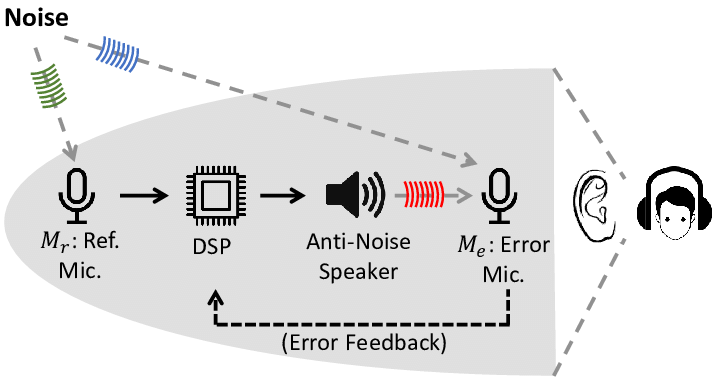
Soundproofing 2.0: Noise-Cancelling Architecture
Exploring noise-cancelling architecture and its potential to transform urban living.Soundproofing 2.0: Noise-Cancelling Architecture
Imagine standing in the heart of a bustling metropolis, surrounded by the cacophony of car horns, construction work, and the constant hum of urban life. Now, picture stepping into a building and being enveloped by an oasis of tranquility, the outside noise fading away as if by magic. This isn't a scene from a sci-fi movie – it's the promise of noise-cancelling architecture, a cutting-edge field that's set to revolutionize our urban living experience.
As someone who's spent years studying acoustic engineering and urban design, I've seen firsthand how noise pollution can impact our quality of life. Traditional soundproofing methods, while effective to a degree, often fall short in our increasingly noisy world. That's where noise-cancelling architecture comes in, bringing the technology we've come to love in our headphones to a much grander scale.

The Evolution of Soundproofing
For decades, architects and builders have relied on passive noise reduction techniques. Think thick walls, double-paned windows, and sound-absorbing materials[6]. While these methods certainly help, they have their limitations, especially in dense urban environments where noise seems to find a way to seep through every crack.
Enter active noise cancellation (ANC), a technology that's been transforming our personal audio experiences for years[4]. The principle is simple yet ingenious: create "anti-noise" that's the exact opposite of the unwanted sound waves, effectively cancelling them out. But how do we take this concept from a pair of headphones to an entire building?
How Noise-Cancelling Architecture Works
The basic principle remains the same, but the scale and complexity increase exponentially. Imagine a building equipped with an array of microphones that constantly monitor external noise. This data is fed into a sophisticated system that generates inverse sound waves, which are then emitted through speakers strategically placed throughout the structure[3].
It's like giving a building its own pair of noise-cancelling headphones, if you will. But instead of covering your ears, it's creating a bubble of quietude around and within the entire structure.
Innovative Materials in Noise-Cancelling Architecture
While the active noise cancellation system does the heavy lifting, innovative materials play a crucial supporting role. Researchers are developing new composites that can absorb or redirect sound waves more effectively than traditional materials.
One fascinating example I've come across is metamaterials – artificially engineered structures with properties not found in nature. These can be designed to bend sound waves in specific ways, potentially creating "acoustic cloaks" that make objects virtually silent.

Smart Design Elements
Noise-cancelling architecture isn't just about high-tech systems and materials; it's also about smart design. Architects are incorporating features like angled facades to deflect sound waves and creating buffer zones between noisy areas and quiet spaces.
Moreover, AI and IoT are playing an increasingly important role. Imagine a building that learns the patterns of noise in its environment and adjusts its noise cancellation strategy accordingly. During my visit to a prototype "smart" apartment building in Singapore last year, I was amazed to see how the system adapted in real-time to changes in traffic noise levels.
Case Studies: Noise-Cancelling Architecture in Action
While still in its early stages, noise-cancelling architecture is already making waves (or should I say, silencing them?). The Nanyang Technological University in Singapore has developed a noise-cancelling device that can be fitted to window grilles, reducing noise pollution from outside by up to 50%[3]. It's a game-changer for urban dwellers who want to enjoy fresh air without the accompanying noise.
Another exciting project is the "Silent Room" created by Dutch designer Simon Heijdens. This installation uses active noise cancellation to create a space of perfect silence within bustling public areas. While not a permanent structure, it offers a tantalizing glimpse into the potential of this technology.
Benefits and Challenges
The potential benefits of noise-cancelling architecture are immense. Reduced noise pollution could lead to improved sleep quality, lower stress levels, and enhanced overall well-being for urban residents. In my conversations with early adopters, many have reported feeling more relaxed and focused in their noise-cancelled spaces.
However, we must also acknowledge the challenges. The technology is still in its infancy and can be prohibitively expensive. There are also concerns about energy consumption and the potential for system failures. And let's not forget the philosophical question: in our quest for silence, are we risking disconnection from our urban environment?
Environmental Impact and Future Possibilities
As we look to the future, it's crucial to consider the broader implications of noise-cancelling architecture. On one hand, it could significantly reduce the negative impacts of noise pollution on urban wildlife. On the other, we need to ensure that the energy required to power these systems doesn't outweigh their benefits.
Looking ahead, I'm excited about the potential integration of noise-cancelling architecture with other smart city technologies. Imagine a city where traffic flow, construction schedules, and building noise cancellation systems work in harmony to create a more peaceful urban environment.
Conclusion: A Quieter Future?
As I stand on my balcony, looking out over the city I call home, I can't help but wonder: what would this view sound like in a world embracing noise-cancelling architecture? Will the urban symphony of the future be one of carefully curated sounds rather than chaotic noise?
One thing is certain – noise-cancelling architecture has the potential to fundamentally transform our relationship with urban spaces. As we continue to push the boundaries of what's possible, we may find ourselves on the cusp of a new era of urban living – one where the city's heartbeat pulses on, but at a volume of our choosing.
References
- https://www.acoustiblok.co.uk/soundproofing-materials/
- https://bubblynet.com/blog/post/noise-cancellation
- https://thefifthestate.com.au/innovation/engineering/scientists-create-noise-cancelling-device-for-buildings/
- https://en.wikipedia.org/wiki/Noise_cancelling
- https://parklanemechanical.com/noise-control-case-studies
- https://archovavisuals.com/noise-reduction-techniques-for-modern-architecture/
- https://www.bang-olufsen.com/en/int/story/active-noise-cancellation
Smart Paint: Transforming Walls into Interactive Canvases






Comments
No comments yet. Be the first to comment!
Leave a Comment